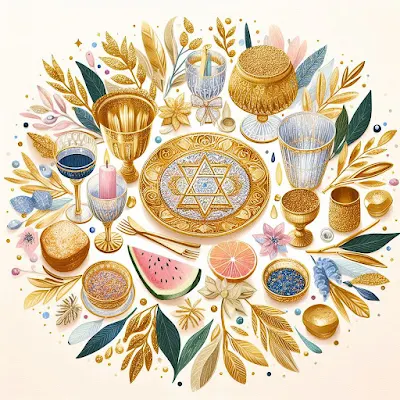Jewish Passover Meal: Exploring The Traditions And Significance Of The Seder Table
The Jewish Passover meal, known as the Seder, is a time-honored tradition that brings families and communities together to commemorate the liberation of the Israelites from slavery in ancient Egypt. Rooted in thousands of years of history and religious significance, the Seder is a rich and meaningful experience that is central to the observance of Passover, one of the most important holidays in the Jewish calendar.
The Seder Table: A Symbolic Landscape
At the heart of the Passover celebration is the Seder table, meticulously set with symbolic foods and ritual items that guide participants through the retelling of the Exodus story. Each element on the Seder plate serves as a visual reminder of the journey from bondage to freedom, inviting participants to reflect on the themes of liberation, redemption, and faith.
Matzah: The Bread of Affliction
One of the most iconic symbols of Passover is matzah, unleavened bread that symbolizes the haste with which the Israelites fled Egypt, leaving no time for their bread to rise. Throughout the Seder, participants eat matzah to fulfill the biblical commandment to consume unleavened bread during the holiday. Its simple, humble nature serves as a powerful reminder of the hardships endured by the Israelites and the urgency of their exodus to freedom.
The Four Cups of Wine: A Toast to Liberation
Another integral component of the Passover Seder is the drinking of four cups of wine, each representing a different stage of the Exodus story: liberation, deliverance, redemption, and acceptance. These cups symbolize the promises made by God to the Israelites and serve as a reminder of the journey from slavery to freedom.
The Haggadah: Telling the Story
Central to the Seder experience is the Haggadah, a text that guides participants through the retelling of the Exodus story, complete with prayers, songs, and blessings. The Haggadah provides a framework for the Seder rituals, ensuring that each element is performed in the proper sequence and with the appropriate reverence.
Family and Community: Sharing in Tradition
Beyond its religious significance, the Passover Seder is a time for families and communities to come together, sharing in the retelling of the ancient story and creating new memories for generations to come. From grandparents to grandchildren, each participant plays a vital role in passing down the traditions of the Seder table, ensuring that its lessons of freedom and faith endure for years to come.
Conclusion
The Jewish Passover meal, with its rich traditions and symbolic rituals, offers a powerful opportunity for reflection, remembrance, and renewal. As families gather around the Seder table each year, they are reminded of the enduring power of faith, resilience, and hope in the face of adversity. Through the rituals of the Seder, we are invited to not only remember the past but also to imagine a future filled with freedom, justice, and peace for all.



